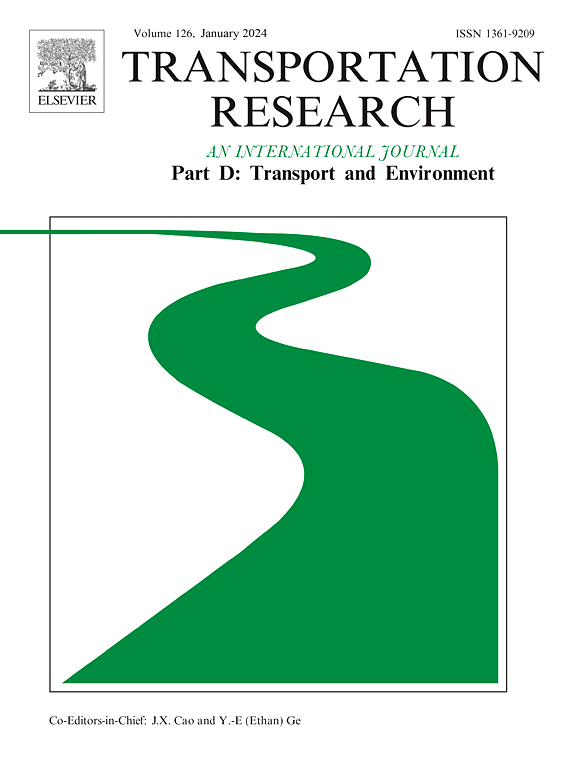Unraveling the role of freight facility development in the dynamics of gentrification
IF 7.3
1区 工程技术
Q1 ENVIRONMENTAL STUDIES
Transportation Research Part D-transport and Environment
Pub Date : 2024-11-03
DOI:10.1016/j.trd.2024.104481
引用次数: 0
Abstract
The demand for freight facilities has expanded substantially due to a surge in e-commerce demand, which significantly impacts land development and the built environment. The locational shift of such facilities leads to growing concern over gentrification due to its externalities and results in changes in socio-economic attributes and land values. Using the Spatial Durbin Model and the Structural Equation Model, this study explores how the locational behavior of freight facilities can influence local socio-economic changes, including gentrification. By using data from the Los Angeles region between 2011 and 2021, the study found that when freight facilities were relocated, gentrification could happen as a result of sociopolitical differences across places. A decrease of 1 freight facility per square kilometer is associated with an increase of $125 in median household income. Moreover, the move-out of freight facilities and the rise in land values are self-reinforcing in the long term. The findings provide insights into the balance between economic growth and community well-being regarding freight infrastructure development.
揭示货运设施发展在城市化动态中的作用
由于电子商务需求激增,对货运设施的需求大幅增加,这对土地开发和建筑环境产生了重大影响。此类设施的选址转移因其外部效应而导致日益严重的城市化问题,并导致社会经济属性和土地价值的变化。本研究利用空间杜宾模型和结构方程模型,探讨了货运设施的选址行为如何影响当地的社会经济变化,包括绅士化。通过使用 2011 年至 2021 年洛杉矶地区的数据,研究发现当货运设施搬迁时,由于各地的社会政治差异,可能会出现城市化现象。每平方公里货运设施减少 1 个,家庭收入中位数就会增加 125 美元。此外,从长远来看,货运设施的迁出和土地价值的上升是相互促进的。研究结果为货运基础设施发展方面的经济增长与社区福祉之间的平衡提供了启示。
本文章由计算机程序翻译,如有差异,请以英文原文为准。
求助全文
约1分钟内获得全文
求助全文
来源期刊
CiteScore
14.40
自引率
9.20%
发文量
314
审稿时长
39 days
期刊介绍:
Transportation Research Part D: Transport and Environment focuses on original research exploring the environmental impacts of transportation, policy responses to these impacts, and their implications for transportation system design, planning, and management. The journal comprehensively covers the interaction between transportation and the environment, ranging from local effects on specific geographical areas to global implications such as natural resource depletion and atmospheric pollution.
We welcome research papers across all transportation modes, including maritime, air, and land transportation, assessing their environmental impacts broadly. Papers addressing both mobile aspects and transportation infrastructure are considered. The journal prioritizes empirical findings and policy responses of regulatory, planning, technical, or fiscal nature. Articles are policy-driven, accessible, and applicable to readers from diverse disciplines, emphasizing relevance and practicality. We encourage interdisciplinary submissions and welcome contributions from economically developing and advanced countries alike, reflecting our international orientation.

 求助内容:
求助内容: 应助结果提醒方式:
应助结果提醒方式:


